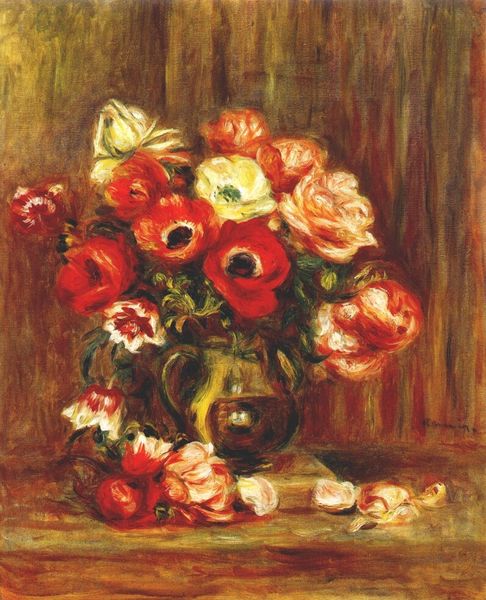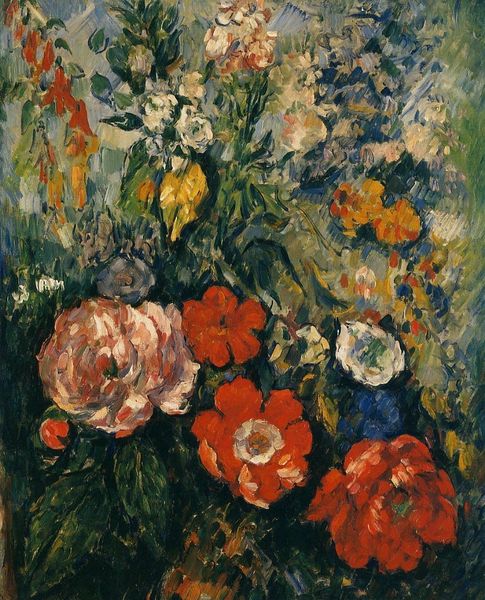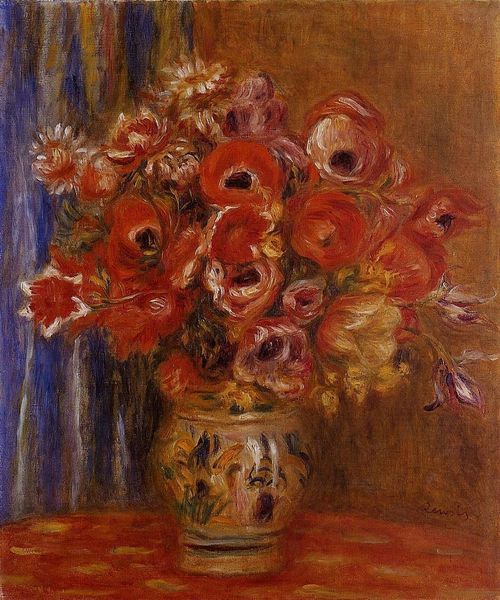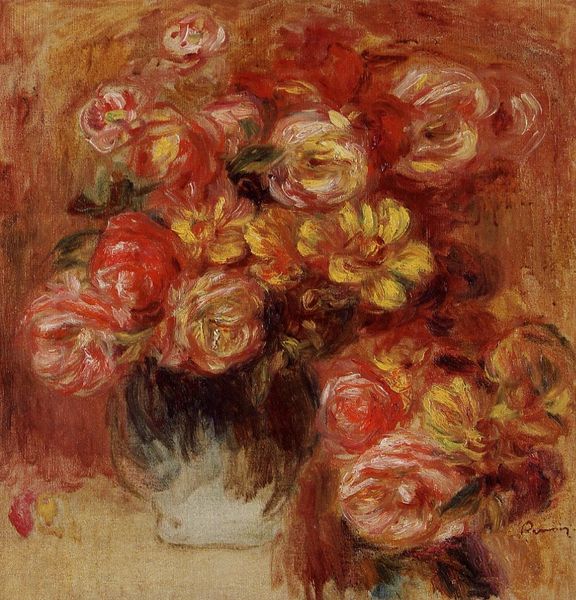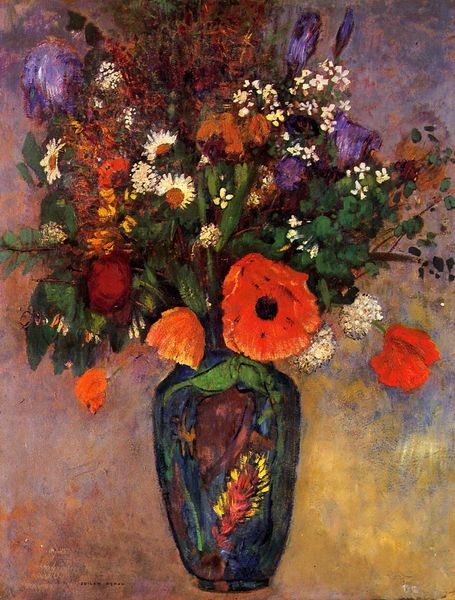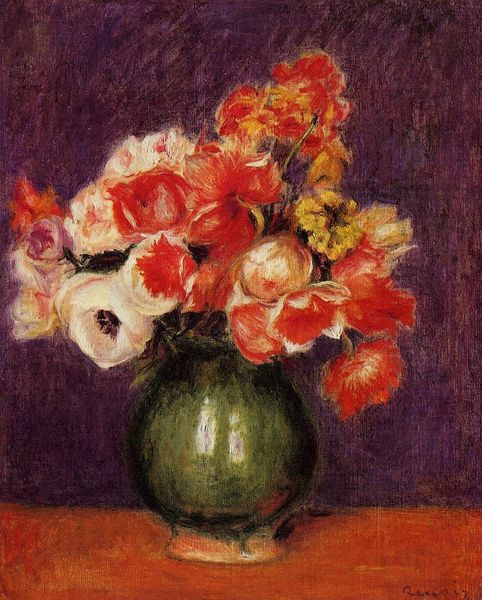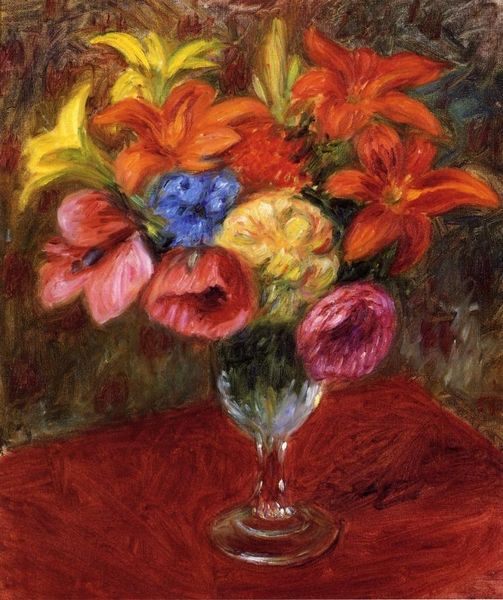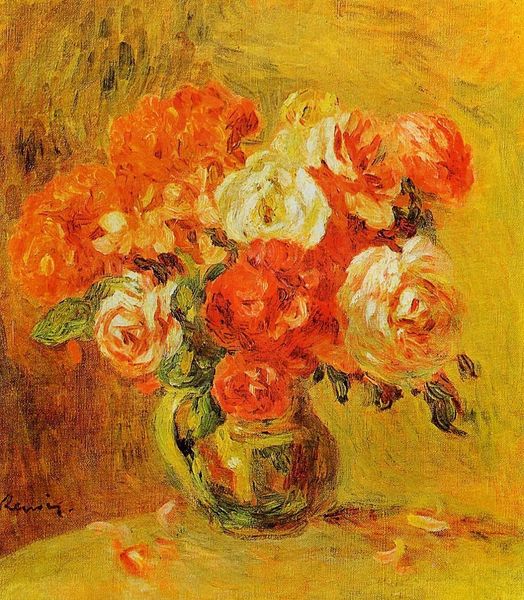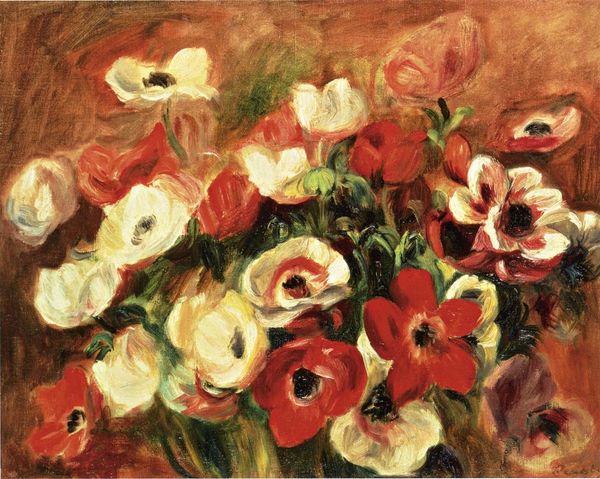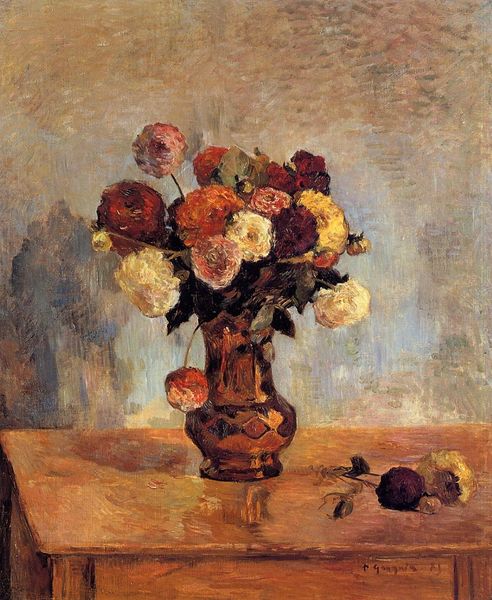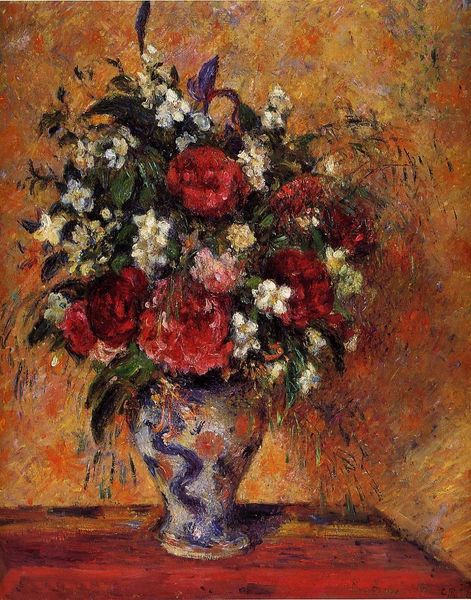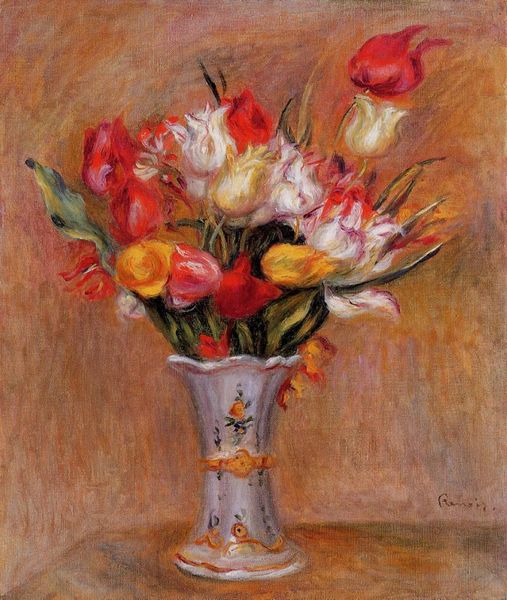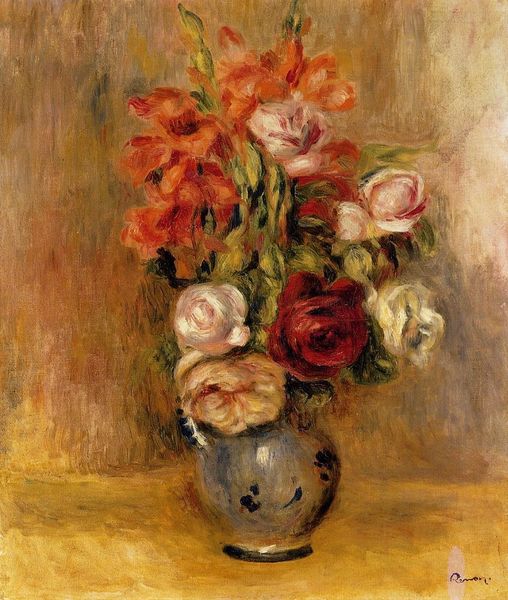
Copyright: Public domain
Pierre-Auguste Renoir painted ‘Anemones’ with oil on canvas, capturing a burst of floral energy. The composition centers on a vase brimming with anemones, their vibrant colors—reds, purples, yellows, and whites—set against a warm, earthy background. The loose, fluid brushstrokes create a sense of movement and immediacy, inviting the viewer into a sensory experience. Renoir’s technique here aligns with Impressionist principles, emphasizing the transient effects of light and color. Yet, the structural solidity of the vase and the arrangement of the flowers also suggest a classical influence, grounding the fleeting impressions in a more formal structure. This interplay between freedom and constraint is key to understanding Renoir’s project. Consider the semiotic function of color: red often signifies passion or energy, while white can denote purity or innocence. Renoir uses these colors not to convey a specific narrative, but to evoke a range of feelings. The texture, achieved through visible brushstrokes, adds another layer of meaning, emphasizing the materiality of the painting itself. 'Anemones' is not merely a representation of flowers; it is an exploration of form, color, and emotion, inviting continuous re-interpretation.
Comments
No comments
Be the first to comment and join the conversation on the ultimate creative platform.
